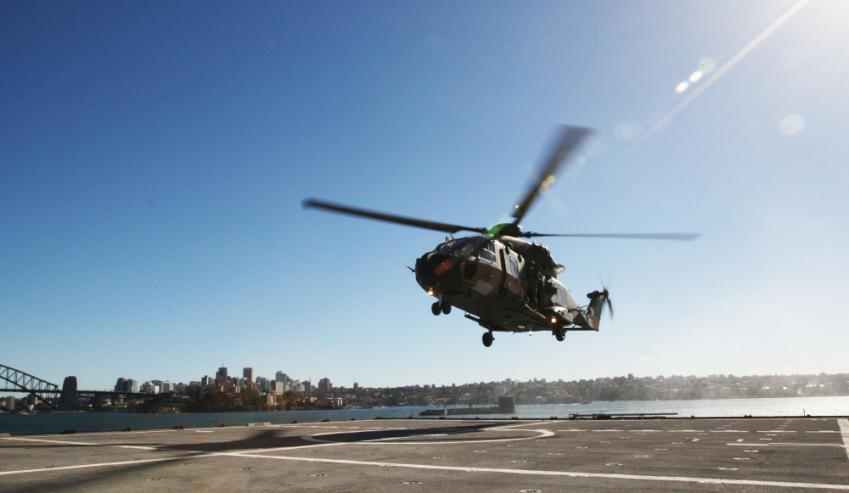DST scientists are helping to support the effectiveness of the Australian Defence Force’s helicopter capabilities on deployment, particularly when deployed with the Royal Australian Navy’s ships.
To continue reading the rest of this article, please log in.
Create free account to get unlimited news articles and more!
Defence Science and Techology (DST) scientist Dr Hurmat Ain said the critical work relies heavily on several core domains. One is flight modelling, used to represent helicopters in multiple situations such as slung load analysis, accident investigations or defining ship-helicopter operating envelopes.
The second major technical area is computational fluid dynamics, which is employed to simulate air-flows around ships and to develop databases defining the aerodynamics characteristics of helicopters.
That information is then used for research into, for example, helicopter brownout effects or “out of ground effect” hovering situations. A third area of research for the team examines augmented vision technology and its impact on helicopter pilot performance.
Bradley Macpherson, who leads this research at DST Group, explained that operating a helicopter on a platform at sea is a complex task that requires rigorous engineering analyses and prudent operational procedures.
“The helicopter is affected by many factors, including wind condition, turbulence on flight deck, ship motion, helicopter control limits, pilot workload, slung load dynamics and night operations. Our team is developing methodologies that will reduce risk and increase the capability of ADF helicopter operations in these challenging environments,” Macpherson explained.
Most of the flight models used by the team have been developed in DST Group over several years, and there’s constant work going on to improve their fidelity. This means taking the helicopters on field trials to extract more data and then update models.
“To do that, we often have to gain access to aircraft that are already going on a trial and request accommodation onboard for extra instrumentation, as well as asking to share the flight data recordings,” Dr Ain said.
“For ship-helicopter simulations, we focus our analysis on the start-up and shutdown phase when the rotors engage and disengage at low speeds.”
The team is also moving into the uninhabited air vehicle (UAV) launch and recovery space, as Defence begins to operate autonomous systems on naval platforms.
Though the team brings expertise developed over two decades to rotary wing UAV systems, new analysis techniques are being developed for fixed wing versions. It’s a lot of work and that’s one reason why the team pitched the need for collaboration in this space during technology pitch sessions at the SCINDICATE and Pacific 2019 events.
“At those times, helicopter rotors are found to be prone to experiencing issues such as blade sailing or mast bending. It is important to know the wind speeds and what directions that cause such problems. That’s how we help Defence – we provide a simulated envelope to give our operators an idea that condition X is safe to operate, and condition Y will result in an uncontrolled movements of the blades,” Dr Ain added.
Stephen Kuper
Steve has an extensive career across government, defence industry and advocacy, having previously worked for cabinet ministers at both Federal and State levels.

 Login
Login








